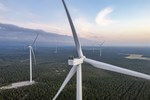News Release from WindEurope
Wind Industry Profile of
Revised EU Renewables Directive set to speed up wind permitting
Permitting remains the biggest bottleneck for deploying wind at scale. Approximately 80 GW of wind power capacity is currently stuck in permitting procedures across Europe, of which at least 59 GW are onshore. It takes up to nine years in some countries to hand out a permit for a single project. This is incompatible with European Climate & Energy ambitions – last year the EU only installed 16 GW of new wind when it actually needs 31 GW every year on average to 2030 to meet its targets.
Policymakers have understood the urgency in unlocking wind energy project pipelines. The EU Recommendations and Guidance on permitting simplification to Governments together with the Emergency Permitting Measures from 2022 were a good start in accelerating permitting. The revised EU Renewables Directive builds on these rules further.
The two-year limit for new projects and the one-year limit for repowering projects that Governments have to give out a permit remain unchanged. But the novelty is that the revised Renewables Directive gives more clarity on what exactly permits need to be approved within these timelines. Notably all the administrative, grid connection permits and the Environmental Impact Assessment are spelt out. The Directive also introduces “renewables acceleration areas” that Member States need to define where permitting will be even faster – within a year for new and six months for repowering projects. Many Member States such as Germany, Spain and Portugal have already defined these acceleration areas.
Renewable energy sources will also now be treated as ‘overriding public interest’. This will help deal with the legal challenges that often delay the construction of renewables. In Germany the principle is already unlocking wind energy projects that had been stuck in court cases. The new EU rules are here to strike a good working balance between the deployment of renewables and other societal interests such as biodiversity all over Europe now.
Also when projects reach the end of their lifetime it will be easier to repower them and replace turbines with newer models. The Environmental Impact Assessments for repowering will be limited to new additional impacts of the projects making the procedure much faster.
National Governments will also now need to digitalise permitting processes within two years of the revised Directive entering into force. This could be a game-changer. In many countries developers still need to print their full project applications and send multiple copies to different permitting authorities at national, regional and local level. Moving the procedures online will save a lot of money, time and paper, and will provide greater visibility to all stakeholders involved on the progress projects make in the permitting pipeline. Some Governments have already taken steps here too. Spain has introduced a digital portal while Portugal aims to set up a digital one-stop shop for permitting which will even apply ‘positive silence’ – a mechanism to certify tacit approval of permits if authorities do not deliver one by the deadlines set upon them in law.
Implementation of the EU rules is now key. Many Governments have started applying different aspects of the EU permitting acceleration measures in practice, and others need to follow asap.
WindEurope CEO Giles Dickson said: “Permitting bottlenecks remain one of the biggest barriers for the expansion of wind energy. Without more permits more quickly we just won’t reach the new 42.5% renewables target. The revised Renewable Energy Directive should really help speed things up. Many Member States have already started simplifying their permitting rules and procedures in line with last year’s EU Emergency Measures. They should now implement the new Directive asap.”
- Source:
- WindEurope
- Author:
- Press Office
- Link:
- windeurope.org/...
- Keywords:
- WindEurope, European Parliment, EU, permitting, Renewables Directive, renewable energy, amendment, target, wind, solar, storage



























